SIB Reassures Public After E. Coli Concerns in Household Water
The Statistical Institute of Belize is clearing the air tonight after raising concern over the safety of drinking water in Belizean homes. On Friday, SIB launched the seventh round of the Multiple Indicator Cluster Survey, better known as MICS, which collects data on health, education, gender equality, and child protection. The last report came out in 2015, so anticipation is high. But the announcement raised eyebrows when SIB revealed traces of E. coli in household water samples, triggering fears about the national water supply. Today, Belize Water Services, the Ministry of Health and Wellness, and SIB stepped in to reassure the public that Belize’s water supply is safe. The contamination, they say, starts at home. News Five’s Britney Gordon has the story.
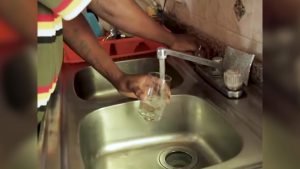 Britney Gordon, Reports
Britney Gordon, Reports
Is Belize’s tap water safe to drink? That’s the question stirring debate after the Statistical Institute of Belize revealed that many of the five thousand households surveyed in its latest Multiple Indicator Cluster Survey tested positive for E. coli. For some, that sounded like a failure in the national water system, but today, SIB set the record straight. Director General Diana Castillo-Trejo explained the tests weren’t done on the national supply, but inside homes, using various water sources. In other words, contamination happens after the water reaches your tap.
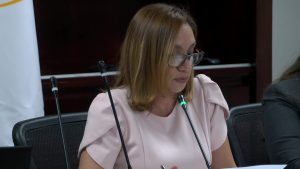
Diana Castillo-Trejo
Diana Castillo-Trejo, Director General, S.I.B.
“We emphasize that the MICS7 results did not seek to measure the presence of contaminants in our national water supply. But rather at the point of consumption in the home, regardless of where the household obtains its drinking water, the highest proportion of at-risk households, for example, was among persons whose drinking water is obtained from rainwater collection. This indicates a need for improved catchment and first flush diversion systems for these households. Furthermore. The gap between the results for the source versus the household samples highlights the importance of addressing household water storage and hygiene practices.”
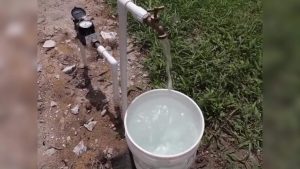 About five thousand households were tested, urban and rural, and the results tell an important story. Most of the contaminated water came from rainwater collection systems, pointing to a need for better hygiene practices at home. Chief of Operations at Belize Water Services, Sanjay Keshwani, reassured the public that BWS runs daily water tests using seven different procedures to keep the national supply safe.
About five thousand households were tested, urban and rural, and the results tell an important story. Most of the contaminated water came from rainwater collection systems, pointing to a need for better hygiene practices at home. Chief of Operations at Belize Water Services, Sanjay Keshwani, reassured the public that BWS runs daily water tests using seven different procedures to keep the national supply safe.

Sanjay Keshwani
Sanjay Keshwani, Chief of Operations, Belize Water Services Ltd.
“At every step, we make sure that water is being processed for a portable reason. Or for drinking purpose. And I would like to ensure or mention that we follow minimum WHO standard, but we aim for AWWA standards, which are more stricter than WHO standards now. One more clarification is that at no point of time the survey was done at BWS plant as source. It was done at the household level and at their source means maybe they have the tank or maybe their tap, or their receptable or their water coolers, example. So it has nothing to do with BWS.”
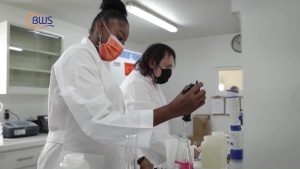 While the contamination may not begin at BWS, the report draws attention to the serious issue of water collection and storage methods across Belize. Testers for MICS7 underwent six days of training with a kit designed specifically for the MICS7 reports, analyzing one hundred milliliter samples from multiple sources. Trejo reveals the alarming number of households flagged in the report.
While the contamination may not begin at BWS, the report draws attention to the serious issue of water collection and storage methods across Belize. Testers for MICS7 underwent six days of training with a kit designed specifically for the MICS7 reports, analyzing one hundred milliliter samples from multiple sources. Trejo reveals the alarming number of households flagged in the report.

How Was the MICS7 Water Samples Tested?
Diana Castillo-Trejo
“At the at a national level, thirty-three point seven percent of the population was at some kind of risk of contamination to their drinking water based on samples collected at the point of consumption collected from a drinking receptacle. We acknowledge that this finding has understandably raised some public concern, and we want to address directly what this data shows at the source level where households first access their drinking water, such as the top dispensers or water tank. Results showed that there was no detectable risk of contamination to the drinking water of seventy point two percent of the population. Fourteen percent fell within the moderate risk range while nine point eight percent were at high risk and five point nine or at very high risk.”
 The Ministry of Health and Wellness also provided insight into the rigorous water quality testing that the national supply undergoes, highlighting that it meets the World Health Organizations standards for potable water.
The Ministry of Health and Wellness also provided insight into the rigorous water quality testing that the national supply undergoes, highlighting that it meets the World Health Organizations standards for potable water.
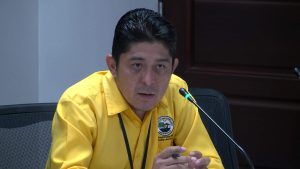
Ary Sosa
Ary Sosa, Water Analyst, Ministry of Health & Wellness
“All our results that we receive in the laboratory are always screened and compared to the World Health Organization guidelines. And once we see a red flag, we act expeditiously. To remedy the situation or to give directives and recommendations for corrective actions of whatever system has been flagged as being at risk.”
The MICS7 report was created to provide stakeholders with crucial data needed to address issues of national importance. Now, the ministry is advising that the public takes the necessary steps to reduce contamination of residential water supply, including using the “flush first” method for rainwater collection and frequent disinfecting of hands and water storage containers. Britney Gordon for News Five.
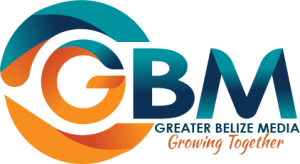
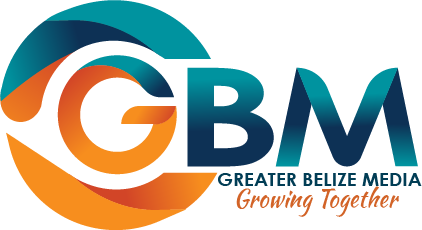




Facebook Comments